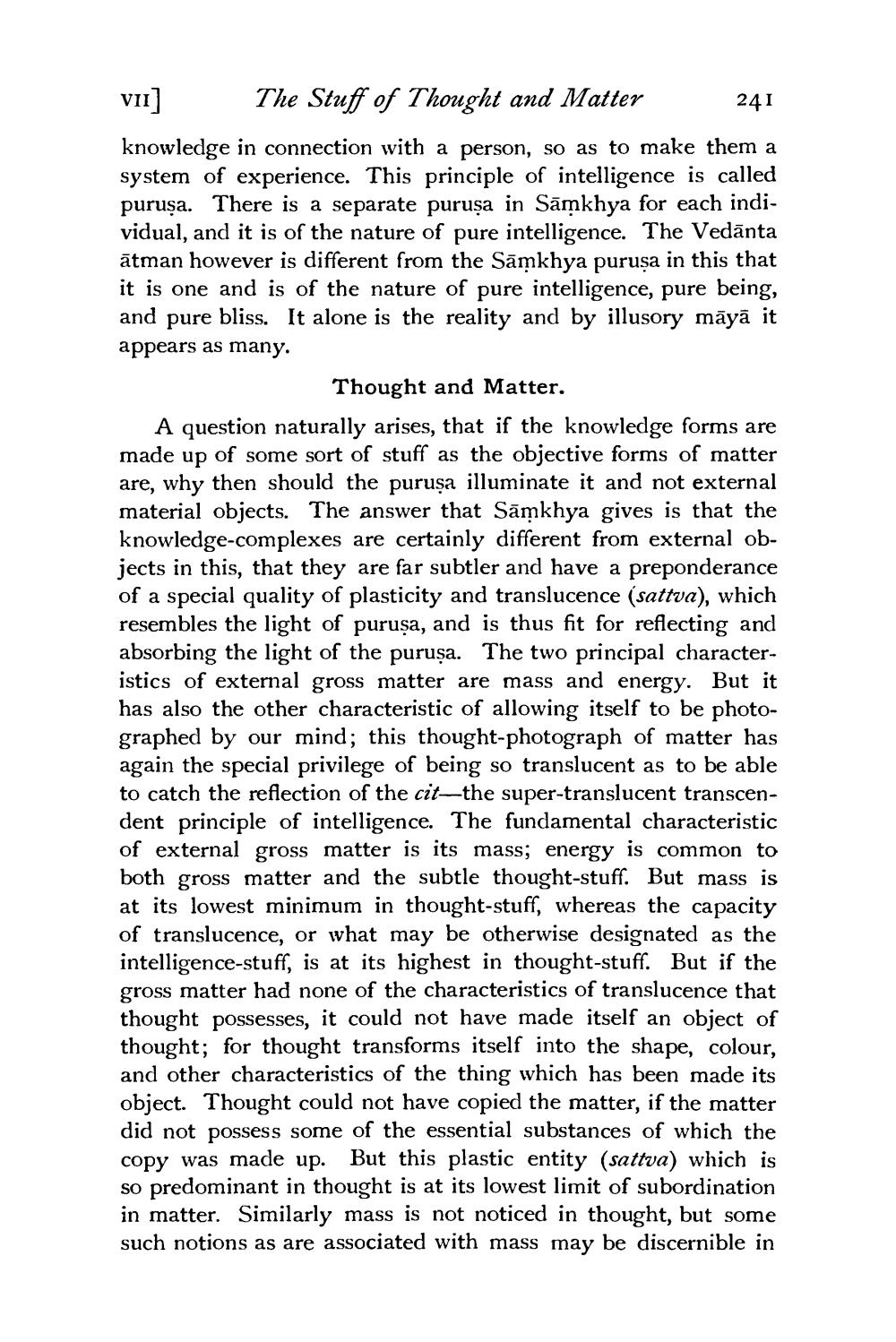________________
VII]
The Stuff of Thought and Matter
knowledge in connection with a person, so as to make them a system of experience. This principle of intelligence is called purușa. There is a separate purusa in Samkhya for each individual, and it is of the nature of pure intelligence. The Vedanta atman however is different from the Samkhya purusa in this that it is one and is of the nature of pure intelligence, pure being, and pure bliss. It alone is the reality and by illusory māyā it appears as many.
241
Thought and Matter.
A question naturally arises, that if the knowledge forms are made up of some sort of stuff as the objective forms of matter are, why then should the puruşa illuminate it and not external material objects. The answer that Samkhya gives is that the knowledge-complexes are certainly different from external objects in this, that they are far subtler and have a preponderance of a special quality of plasticity and translucence (sattva), which resembles the light of purușa, and is thus fit for reflecting and absorbing the light of the purusa. The two principal characteristics of external gross matter are mass and energy. But it has also the other characteristic of allowing itself to be photographed by our mind; this thought-photograph of matter has again the special privilege of being so translucent as to be able to catch the reflection of the cit-the super-translucent transcendent principle of intelligence. The fundamental characteristic of external gross matter is its mass; energy is common to both gross matter and the subtle thought-stuff. But mass is at its lowest minimum in thought-stuff, whereas the capacity of translucence, or what may be otherwise designated as the intelligence-stuff, is at its highest in thought-stuff. But if the gross matter had none of the characteristics of translucence that thought possesses, it could not have made itself an object of thought; for thought transforms itself into the shape, colour, and other characteristics of the thing which has been made its object. Thought could not have copied the matter, if the matter did not possess some of the essential substances of which the copy was made up. But this plastic entity (sattva) which is so predominant in thought is at its lowest limit of subordination in matter. Similarly mass is not noticed in thought, but some such notions as are associated with mass may be discernible in




